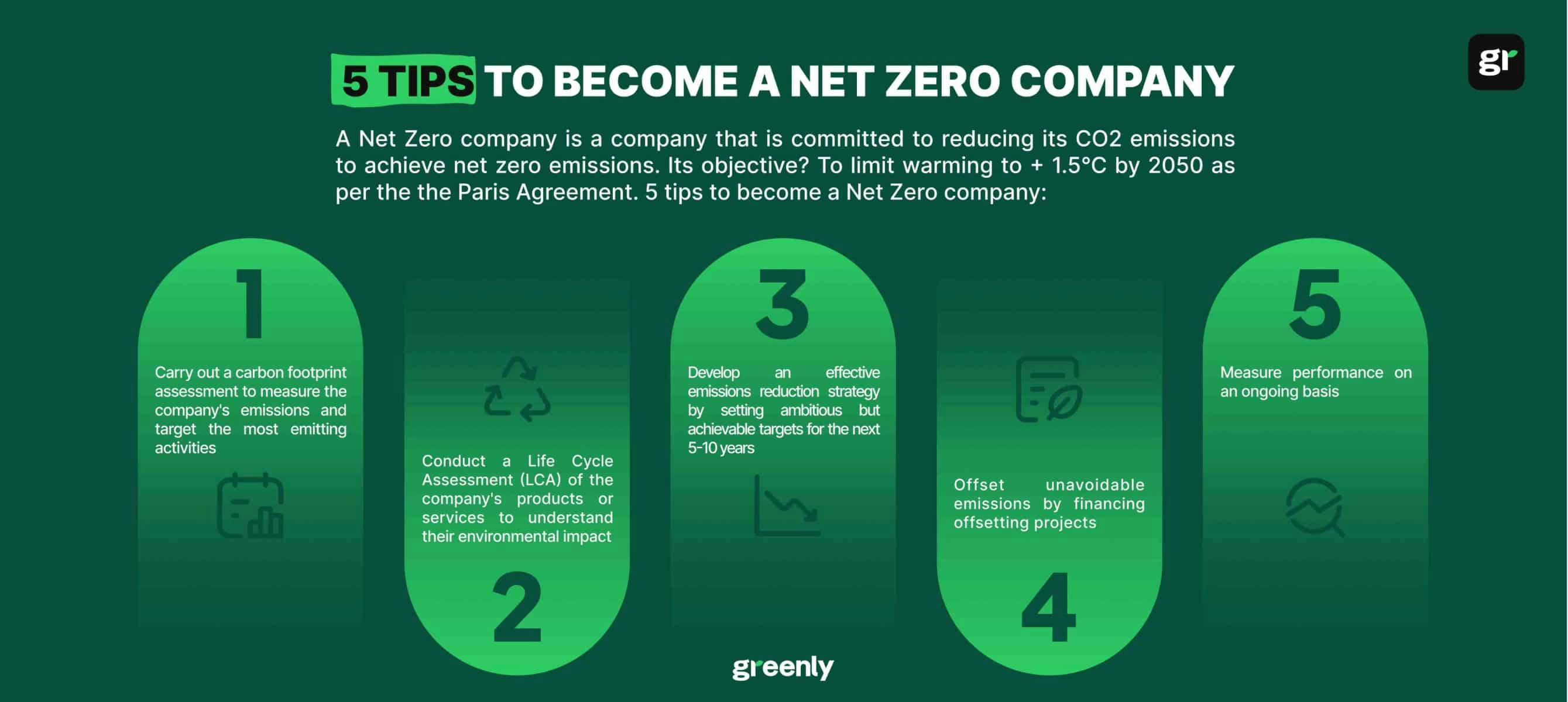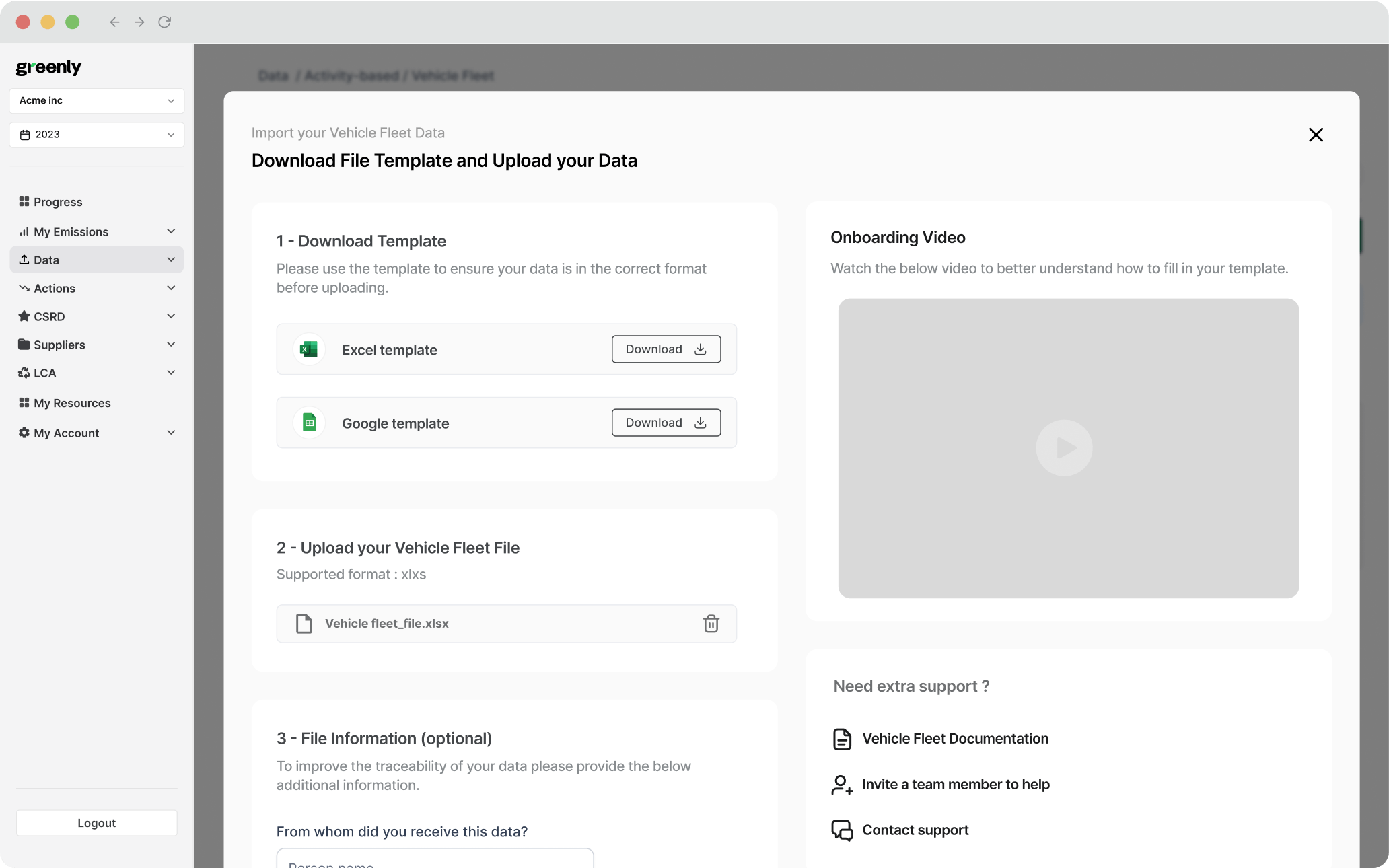
What are the 3 Pillars of Corporate Sustainability?
In this article, we'll explore what the 3 pillars of corporate responsibility are, why they're important, and how businesses can turn them into practical action.
ESG / CSR
Industries



On the surface, becoming a net-zero company is a bit like winning the Award for best actor. Companies that implement net zero targets, net zero pledges, strive to join the net-zero transition or 'achieve' net zero are seen as Holy Grail companies, regarding ecology and sustainable development.
This is one way to explicitly establish their business models as environmentally friendly, and another is by cultivating a customer care team dedicated to climate action and certain features that help a company achieve their net zero goals.
But the reality of the situation is that no-company can actually achieve a status of net-zero - what's important is the journey towards it. This is why it's important not to jump over the other steps or ignore the importance of understanding what 'net zero emissions' really means.
👉 In this article, we'll explain what net zero commitments are, why many companies claim to be 'net-zero companies', and why net zero emissions pledges are more complicated than you might think.
In short, the 'net-zero' concept has the aim of removing as much CO2 as is emitted, in order to stop the accumulation of greenhouse gases in the atmosphere . Ultimately, this type of climate pledge is an effort to stabilize current worldwide temperature levels and tackle global warming – as both global temperature increase and global emissions incentivize the need for emissions reduction, net zero emissions commitments, and carbon removal projects.
In this context, any company or organization can only contribute to the transition to this “net zero” world and model. It cannot be described as 'net-zero' itself. The only thing the company can do is to develop a net zero strategy, in order to carry out the necessary changes to contribute to the achievement of global net zero balance by 2050.
Ultimately, there is no such thing as a net zero company. That's greenwashing (or a misunderstanding as to what net-zero actually means), as no company on the planet can claim that their services, system, or intended climate action has achieved a net-zero status.
Although there is no such thing as a net-zero company, this doesn't mean that companies cannot contribute to net zero targets – or that their efforts to reduce carbon emissions or improve upon energy efficiency in the midst of the climate crisis should go unnoticed.
However, businesses need to be aware that it is not enough to compensate for their greenhouse gas (GHG) emissions, they have to eliminate their excess GHG emissions too.
A lot of companies compensate for their greenhouse gas emissions by relying on various investments, such as a sustainable projects concerning renewable energy development. They seek to prevent the production of emissions they are responsible for by investing in an outside organization.
These organizations are often committed to reducing emissions, sourcing renewable energy, or place importance on assisting developing countries to work towards a net-zero transition.
However, to efficiently contribute to the Net-zero target, companies must seek to:
This is why sustainable companies will invest specifically (after they reduce their emissions) in the creation of carbon sinks, that will eliminate their residual emissions. Most of the time, the companies included in this category finance new forests planting or mangroves preservation.
The table below will depict the difference between net-zero and carbon neutrality:
| Aspect | Net-Zero | Carbon Neutrality |
|---|---|---|
| Definition | Achieving a balance between the amount of greenhouse gases emitted and the amount removed from the atmosphere. | Offsetting any greenhouse gas emissions produced by investing in projects that reduce or remove emissions elsewhere. |
| Scope | Focuses on reducing emissions as much as possible before offsetting any remaining emissions. | May rely more heavily on offsets without prioritizing emission reductions. |
| Long-term Goal | Aims to limit global warming to 1.5°C by drastically cutting emissions. | A more flexible, often shorter-term approach to balancing emissions. |
| Emission Types | Includes all scopes of emissions: direct, indirect, and value chain emissions. | Often focuses on direct emissions, with indirect emissions less rigorously addressed. |
| Offsets | Used as a last resort after making significant reductions. | Offsets can play a larger role, sometimes allowing less reduction effort. |
| Certification | Requires clear, science-based targets aligned with the Paris Agreement. | Can be achieved through a variety of voluntary carbon offset programs. |

Better than claiming to be a 'net-zero company' (which is wrong), contributing to net-zero will help in the limitation of global temperature rise under 1.5 °C.
In fact, that’s why such initiatives, such as the Paris Agreement, exist – as they can help countries across the world unite as a team to tackle global warming.
However, good will and ethical awareness aren’t always sufficient to engage a whole company in such a revolution. In order for companies taking action to be successful, they will have to seek to contribute to net-zero must take into account several details and changes that must be made within their organization.
Here are 5 “corporate” reasons to strike out.
Millennials are particularly mindful of ethical and environmental issues, but fortunately – they are not the only ones.
Raising awareness about climate change makes people more critical. It also makes them more likely to join and support a company that demonstrates its values and beliefs through concrete actions, tracking, and engagements.
If your company wants to build a stronger employer brand, it can prove most effective to contribute to the global net zero target.
You want to strengthen your company’s long-term strategy? Working towards net-zero emissions is an achievable target.
Again: if people are more demanding for ethical brands, the best way to ensure the sustainability of your business model is to adhere to your consumers’ buying criteria.


Most of the time in measuring your carbon footprint, the first step to help in reaching net-zero goal is to eradicate useless expenses.
The approach underlines all the aspects of a business model that can be improved. However, the consequence of this is that costs get optimized, and turnover increases.
Regardless, it serves as confirmation that your company is in line with achieving your net-zero targets.
Investors know the scope of what's at stake these days, and aim to contact companies that recognize the value in becoming a net-zero company. In addition to this, investors are perfectly aware that laws are becoming more difficult for non-sustainable companies to comply with.
In this context, you may have heard of “sustainable finance” – which describes the phenomenon of investors who are now looking to invest their money in so-called “sustainable businesses”. In other words, businesses that fit with sustainable development and climate action criteria.
Even if you don’t care about investors, business need to be aware of the increasing number of rules and regulations concerning sustainability. For example, some of the assessments required are going to impact companies more and more — all sectors included.
Take the lead: contribute to the net-zero target before being obliged to do so by your government or under new local laws.
Convinced by the interest of undertaking such an approach, more and more companies are taking the road to help in achieving net-zero at global scale. However, the “road” is not necessarily the same for everyone, as companies around the world can expect to deliver their commitment to net-zero in different ways.
👉 To date, there is no roadmap that is set in stone. Nor is there a "model" to follow, as each company adapts the precepts of net-zero emissions, according to their own business, their own market and their own possibilities.
In the end, it's important to not waste your time looking for the guide of the perfect company trying to contribute to net zero. You will have to define, develop and implement your own strategy, transition plans, and processes. The one which will allow you to reach your objectives in terms of emissions, but also in terms of sales.
However, that doesn't mean that you are going to be parachuted into the jungle of sustainable development, without even a compass to guide you – since our mindset and help from Greenly could be a wonderful compass in the midst of your process towards taking climate action!
In fact, Greenly’s mission is to encourage any organization willing to contribute to the collective effort for sustainable development. The second part of the IPCC's report highlights the urgency of the situation - we would even dare to say that there is not a minute to lose (the sooner the better), nor an effort that is too small.
Here are 7 tips to start your transition to net-zero:

For this reason, Greenly has developed the tools that allow you, before committing to anything, to draw up the balance statement of your greenhouse gas emissions.
First, it's important to start with conducting your carbon assessment.
No worries, Greenly can help get the job done – as our team can provide all the best recommendations, so that you just have to choose which actions you want to take on!
This is not about setting approximate targets - any action taken must be effective in contributing towards net zero. In order to be effective, any action must be linked to specific objectives. Wondering how to plan your net-zero transition? Greenly can help you develop and create these objectives.
However, if you want to actively contribute to this process, know that the SBTi initiative has worked to clarify the objectives that any company should achieve, to effectively fight against climate change through the use of science based criteria.
Take a look, as science-based targets show companies how much and how quickly they need to reduce their greenhouse gas emissions, in order to prevent the worst impacts of climate change.
The idea is to tackle global warming, while seizing the benefits and boosting competitiveness in the transition to a net-zero economy.
If you expect to create a sustainable and stimulating approach for your teams without their support, you will certainly not reach your target — businesses need to see the bigger picture.
In short, this means that you have to develop a real carbon roadmap, with many intermediate objectives. The idea is to punctuate your through a series of small victories, slowly working towards a greater goal.
The idea is twofold: it will allow you to objectively measure your progress as you go, but also to motivate your troops. Remember that you are not going to become a sustainable business overnight.
Therefore, it's important to take this journey one step at a time – you'll need to seek to create achievable, intermediate steps, as this can help to facilitate your progress.
Whether you are selling a product or a service, be aware that it can also be optimized with a zero-net approach. Components, suppliers, conveyances, etc. One of the first things you should be interested in is your offer itself. There is a good chance that it can be improved in one way or another. If you’re offering a service, for example, you can look at the carbon footprint of your current organization.
Do you really need your employees to work on site? What is the emission rate of your website or website hosting provider — which is an integral part of your company functioning? Is your company dedicated to tracking their progress towards sustainability? All of these are important factors to consider.
Your company's value chain is crucial. Most of the companies' emissions come from their value chain - and their suppliers.
This is why it is really important for any company seeking to help in reaching net-zero targets to carry out a deep analysis of their suppliers' environmental impact.
Regarding the situation, companies can no longer be content with reducing our greenhouse gas emissions, as companies must work to eliminate these emissions. That is the whole point of the net-zero initiative and strategy. Therefore, if companies are committed to this collective effort, companies must gradually move to sequester (or destroy) their own greenhouse gas emissions.
To do so, find out about the various projects your company could support to create new carbon sinks. If after review, you are interested in any, Greenly is well equipped to help you – and we will be glad to encourage your efforts and help you progress in your ecological transition.
It's important to remember that there are more options than just carbon sinks. Many initiatives for sustainable development are emerging – and each of them deserves to be encouraged, supported and even funded. In fact, if you identify an approach you want to contribute to, do not hesitate – go ahead!
You want to support the development of solar panels? You want to support citizen initiative programs? These are all great ways to get started, and as we say at Greenly – every effort counts in reducing emissions and it all adds up to collectively make a difference.
Fighting climate change is about teamwork. If you have the means to support promising projects, always believe that the sky is the limit.
If reading this article on if it's possible to become a net-zero company has inspired you to consider your company’s own carbon footprint, Greenly can help.
At Greenly we can help you to assess your company’s carbon footprint, and then give you the tools you need to cut down on emissions. We offer a free demo for you to better understand our platform and all that it has to offer – including assistance on how to reduce emissions, optimize energy efficiency, and more to help you get started on your climate journey.
Learn more about Greenly’s carbon management platform here.
